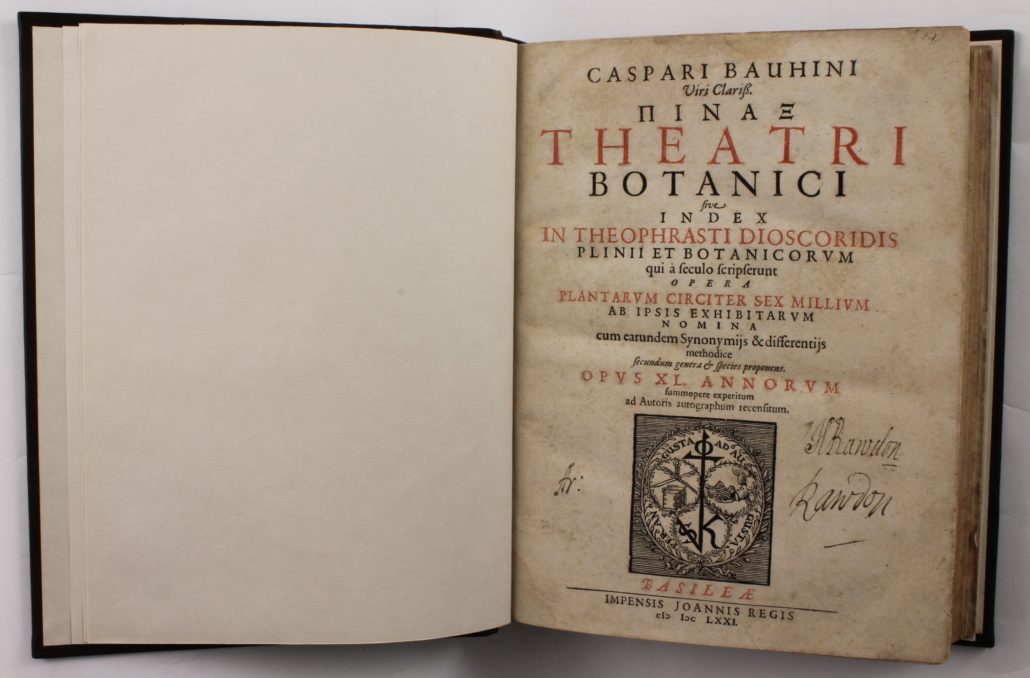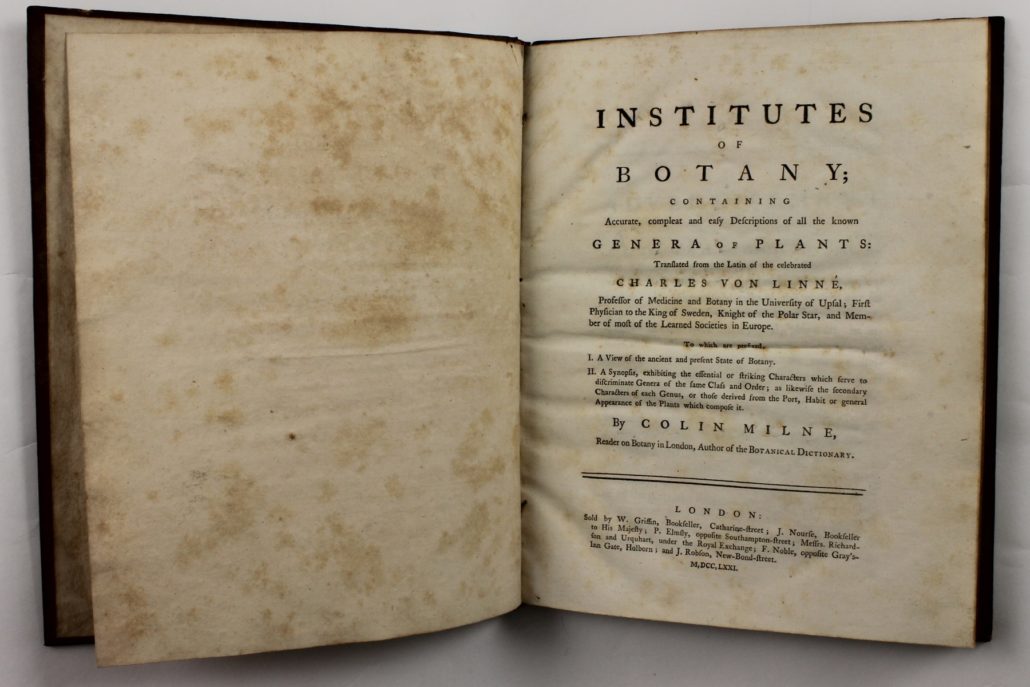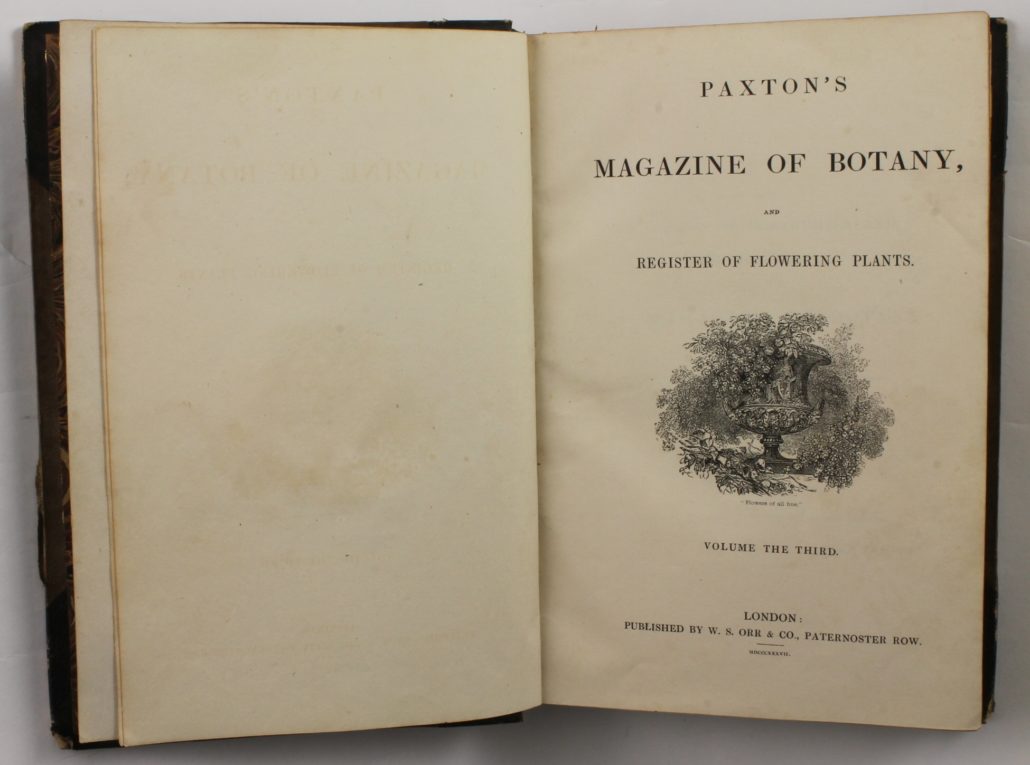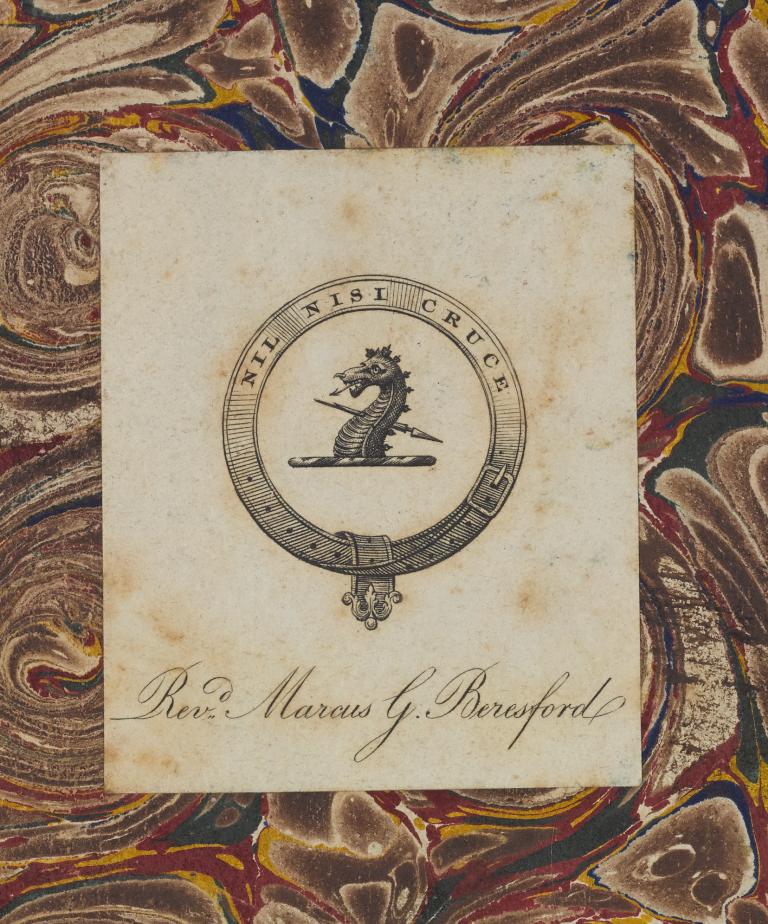
This exhibition marks 2020 as the International Year of Plant Health, displaying examples of our books which refer to various types of plants and their uses.
Botany is the science of plant life. The first written records of plants go back as far as the Neolithic Age, 10,000 years ago.
This exhibition marks the International Year of Plant Health, as announced by the United Nations (UN) General Assembly. The UN aims to raise awareness on how protecting plant health can help end hunger, reduce poverty, protect the environment and boost economic development.
The exhibition displays examples of our books which refer to various types of plants and their uses.
Botany, – the science of the vegetable kingdom, is one of the most attractive, most useful and most extensive departments of human knowledge. It is above every other, the science of beauty.
There are few plants, which are not beautiful, considered as separate individuals, and in all of the parts of their individual organization and there is a beauty in the grouping of plants, whether as grouped by nature, or by skilful art, to which there is nothing equal in that of any of the other productions of nature.
American botanist Samuel G. Goodrich
Click on the carousels to see full size images.
The seconde part of Vuilliam Turners Herball : wherein are conteyned the names of herbes in Greke, Latin, Duche, Frenche, and in the apothecaries Latin, and somtyme in Italiane, wyth the vertues of the same herbes wyth diuerse confutationes of no small errours, that men of no small learning haue committed in the intreatinge of herbes of late yeares. William Turner 1562 P001394475
This herbal (a book that describes herbs and their culinary and medicinal properties) was the first available in the English language, rather than Latin.
William Turner, an early herbalist and ornithologist, provides a clear, systematic survey of English plants, with woodcuts based on his own field studies.
It gave everyone who could read the chance to identify plants and look up the ‘uses and vertues’ of plants.
Iac. Cornuti Doctoris Medici Parisiensis Canadensium plantarum, aliarúmque nondum editarum historia […] Jacobi Cornuti 1635 P001405256
This work contains descriptions of the plants of Canada. Jacques-Philippe Cornut, a French physician and botanist, compiled the work, without ever having visited there!
He received his specimens from another botanist, from his father, who looked after the royal gardens and the garden of the Paris Faculty of Medicine, and from a family who owned some commercial nurseries in Paris.
Over the course of his career he described over 541 species of plants, of which more than thirty were new species from North East America.
Caspari Bauhini Pinax Theatri botanici : sive Index in Theophrasti, Dioscoridis, Plinii et botanicorum qui à seculo scripserunt opera : plantarum circiter sex millium ab ipsis exhibitarum nomina cum earundem synonymiis & differentiis methodice secundum genera & species proponens. Gaspard Bauhin 1671 P001394319
In Pinax theatri botanici, Swiss botanist Bauhin describes and classifies around 6,000 species.
The work is a milestone in botanical history, as Bauhin introduced the naming of plants by a two-part scientific name, consisting of their genus and their species.
This system was later adopted and improved by the botanist Linnaeus. An updated version is still in use today (with numerous changes).
To commemorate Gaspard’s, and his brother Johann’s, contribution to botany, a genus of more than 500 species of flowering plants was named Bauhinia.
Experimenta et meletemata de plantarum generatione. Autore Jacobo Logan, Judice supremo, et Praeside Concilii Provinciae Pensilvaniensis in America. = Experiments and considerations on the generation of plants. By James Logan, President of the Council, and Chief Justice of the Province of Pensilvania. Translated from the original Latin. James Logan 1747 P001070742
This work is the result of experiments conducted by Lurgan man James Logan: US administrator, scholar and prolific book collector.
When Logan read about the germination of seeds exposed to the air in some of his books, he was keen to do his own experiments. As a result of this research, he was the first to describe accurately the mechanism of how plants are fertilised.
Initial findings were published in a scientific journal, but Carl Linnaeus, possibly the most well known botanist of all time, encouraged him to publish all his findings in full.
With the help of natural historian Collinson, and Dutch botanist Gronovius, Logan published Experimenta et meletemata de plantarum generatione.
A treatise of fruit-trees. By Thomas Hitt, Gardener to the Right Honourable Lord Robert Manners, at Bloxholme, in Lincolnshire Thomas Hitt 1758 P001395455
A treatise of fruit-trees describes the best methods to prune and train trees. It also includes directions on how to package and transport trees from their original places to different locations.
The use of plants and trees by humans is called economic botany: it studies how humans used plants for food and drink, medicines and poisons, clothing and ornaments, fuels, papers, toys, and musical instruments.
This work reflects the increase in the cultivation of fruit and vegetables during the 18th century.
[…] A view of the ancient and present state of botany. […] By Colin Milne. Colin Milne 1771 P001404977
This work by Colin Milne is a prefix to his translation of Genera Plantarum by Carl Linnaeus. Swedish Botanist Linneaus, who formalised the modern system of naming organisms. He is known as the ‘father of modern taxonomy’.
Milne’s contribution to botany does not simply rest with the translation of Genera Plantarum, but also with this history of botany and of the natural and artificial arrangements considered by botanists throughout the centuries.
In the Critical Review of November 1772 the following is written:
Independently of the translation of Carl Linneaus, Dr Milne’s historical account of botany highly merits approbation: as it not only presents us with a view of the various progressive attempts which have been made for the improvement of the science, but also fully exhibits the several imperfections peculiar to the different modes of arrangement. In a work of this sort our ideas are carried beyond the limits of a particular branch of natural knowledge, and we contemplate in the efforts of various authors, the weakness, the ingenuity, and gradual improvement of the human mind.
Paxton’s Magazine of Botany, and Register of Flowering Plants Joseph Paxton 1834 P00246910x
Joseph Paxton made his name as a gardener, garden designer and landscape architect.
As head gardener for the Duke of Cavendish, Paxton cultivated a particular type of banana in the greenhouses of Chatsworth House. He named the plant Musa cavendishii, after his employer. Since the 1950s this banana is the most commonly traded banana in the world.
From around 1830 Paxton started working on botanical publications. The periodical Magazine of Botany was his third venture.
It contains the descriptions of new and uncommon plants grown in British gardens. Many descriptions are accompanied by colour illustrations by F.W. Smith.















